The Variety of Species in NTU
The azaleas mostly seen along Palm Avenue are Rhododendron mucronatum, including “Rhododendron pulchrum,” “Rhododendron mucronatum ‘Akemono’,” “Rhododendron mucronatum ‘Shiroyukyu’” and “Rhododendron niveum.” Rhododendron pulchrum are rose-purple flowers with red flecks in the core. Flowers of Rhododendron mucronatum ‘Akemono’ are pink, dotted by red flecks in the core. Rhododendron mucronatum ‘Shiroyukyu’ are white flowers with chartreuse flecks in the core. The white petals of Rhododendron niveum are flecked with red specks or stripes. The flowering season of these four species falls around mid-March. “Rhododendron scabrum,” another common species on campus, blooms vermillion flowers with dark red spots in its core. The florescence of Rhododendron scabrum is slightly later than the previous four, as the flowers flourish around mid April. “Rhododendron indicum,” a type of azalea that only blossoms when summer approaches, thrives in front of Building No. 1, as well as the neighboring areas of New Moon Pavilion and the Main Library. Additionally, several shrubs of the rare and precious “Rhododendron kanehirai” are preserved. The upstream area of Beishi River used to be the original habitat of the species, but the construction of Feitsui Reservoir has resulted in the near extinction of the native plants in the wild. Moreover, a small number of the shrubs of “Rhododendron oldhamii Maxim,” “Rhododendron x hybrida” and “NTU Hybrid Rhododendron” can be seen, among which Rhododendron oldhamii Maxim is native to Taiwan.
(Text provided by NTU Department of Horticulture and Landscape Architecture)
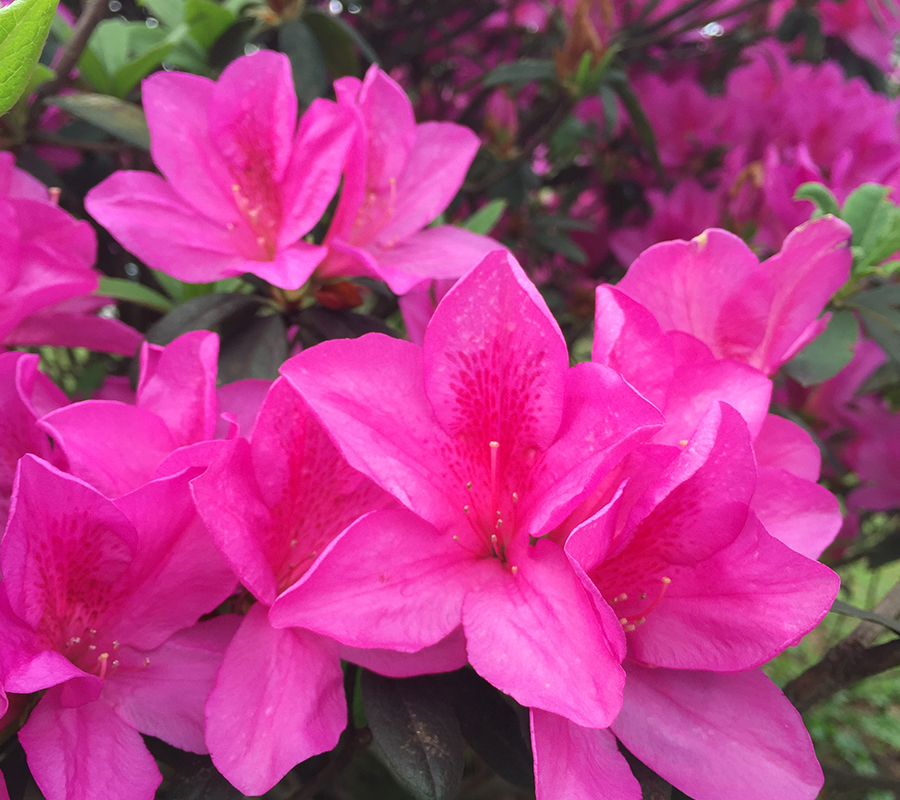
Rhododendron pulchrum
The species has purplish red petals with red spots in the core. Its florescence is around mid-March.
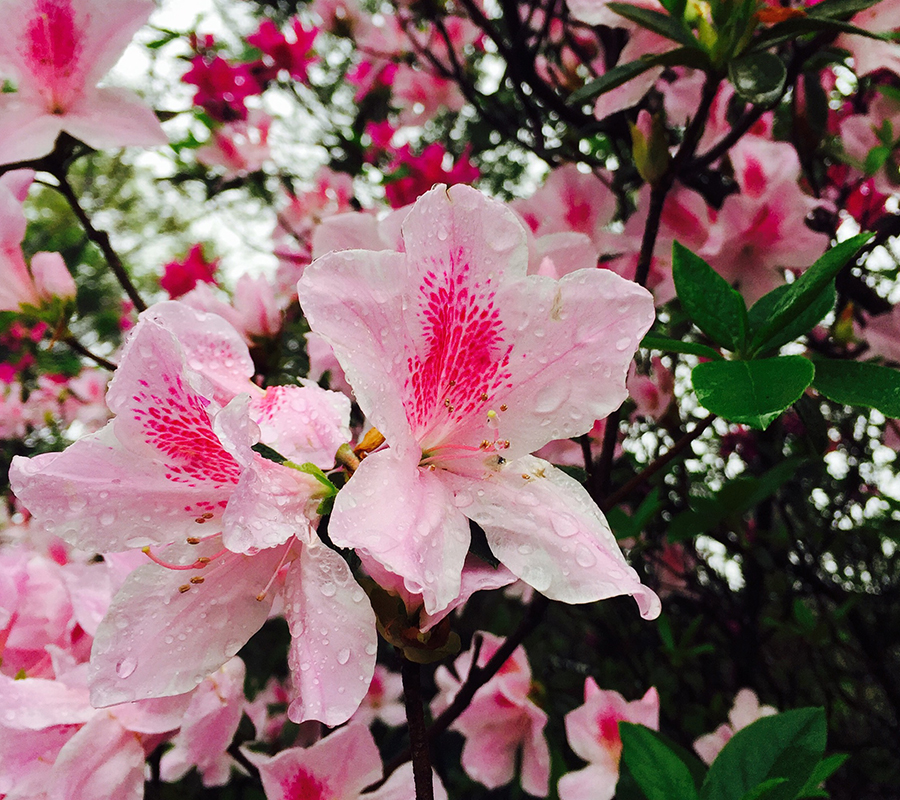
Rhododendron mucronatum ‘Akemono’
The species has pink petals with red spots in the core. Its florescence is around mid-March.
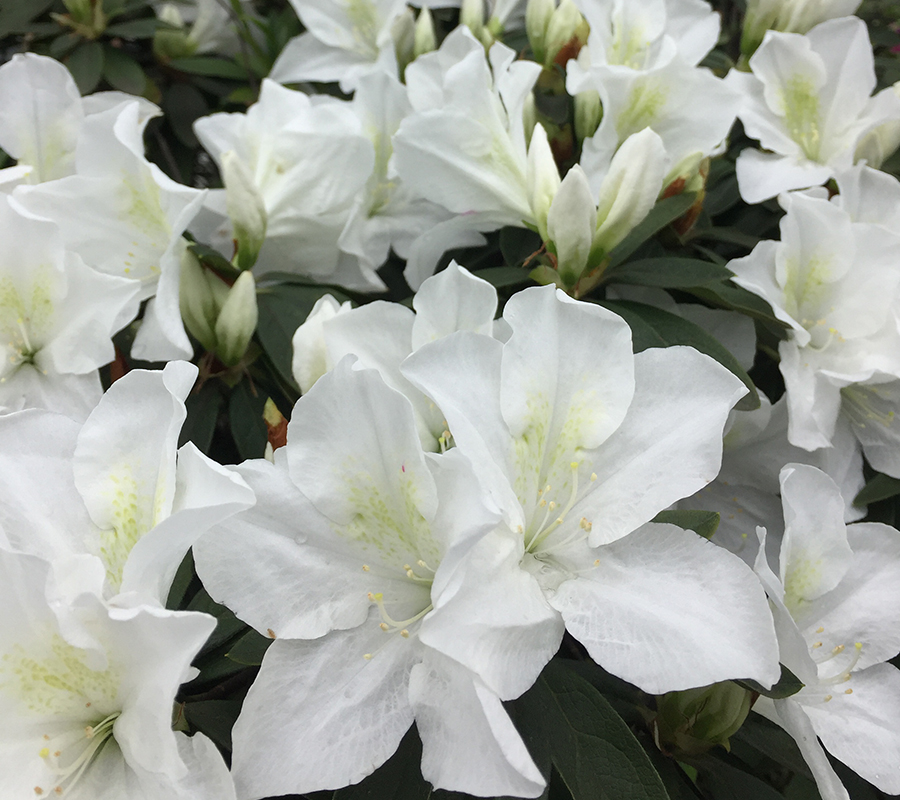
Rhododendron mucronatum 'Shiroyukyu'
The species has white flowers with chartreuse flecks in the core. Its florescence is around mid-March.
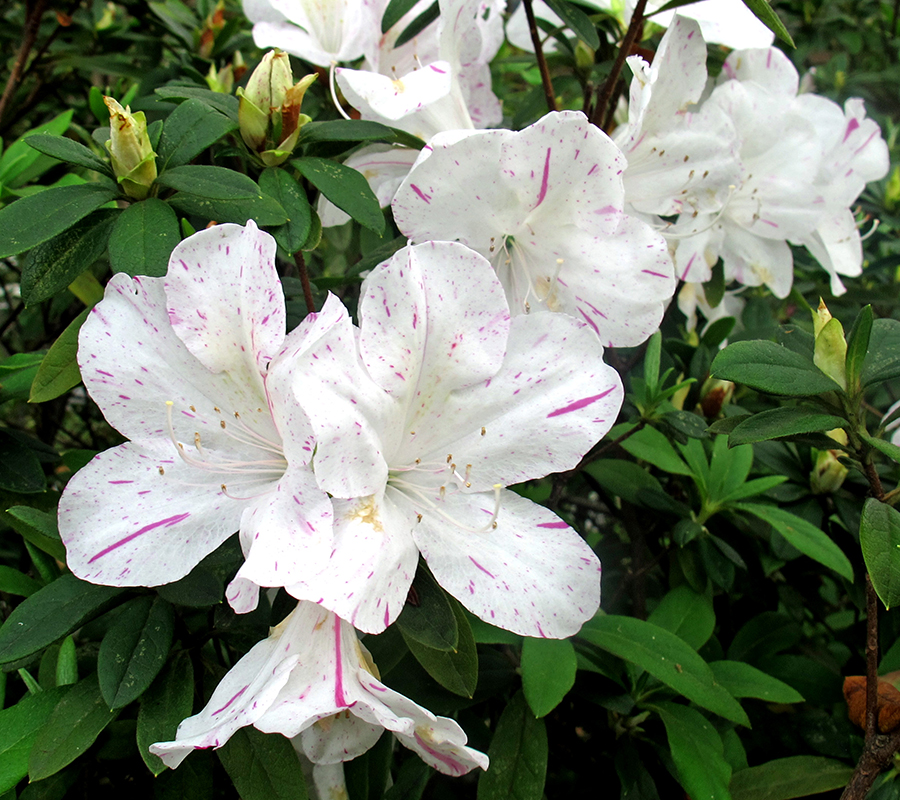
Rhododendron niveum
The species has white flowers flecked with red specks or stripes. Its florescence is around mid-March.
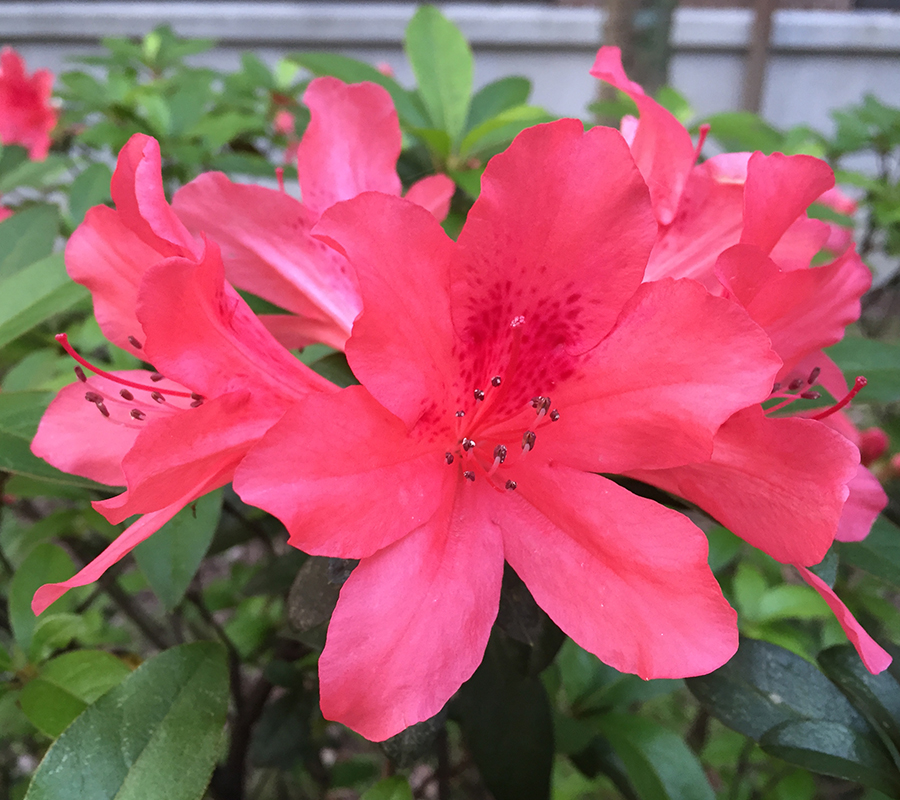
Rhododendron scabrum
The species has brick red petals with crimson flecks in the core. Its florescence is around mid-April, which is later than some other species.
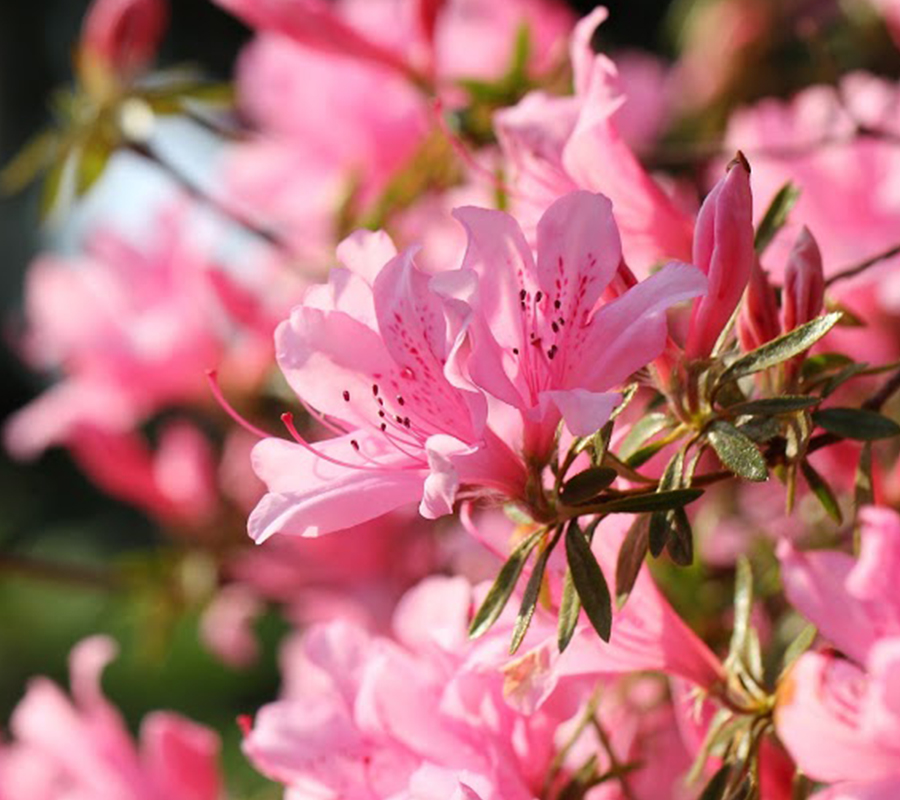
Rhododendron kanehirai
The species, considered a national treasure, was native to the upstream riverbanks of the Beishi River in northern Taiwan but has nearly gone extinct in the wild due to the construction of Feitsui Reservoir. Currently there is a shrub of Rhododendron kanehirai on campus.
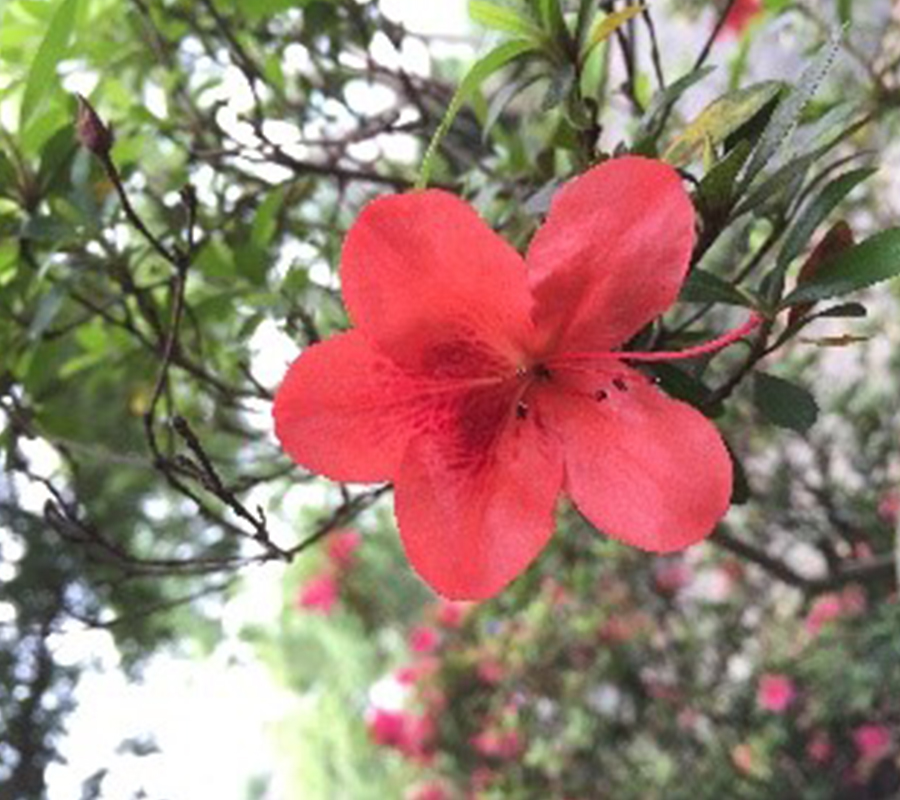
Rhododendron indicum
The species is called gaoyue-dujuan in Chinese. “Gaoyue” refers to the fifth month on the lunisolar calendar; “dujuan” refers to azaleas. The name thus indicates the florescence of the species is close to summer.
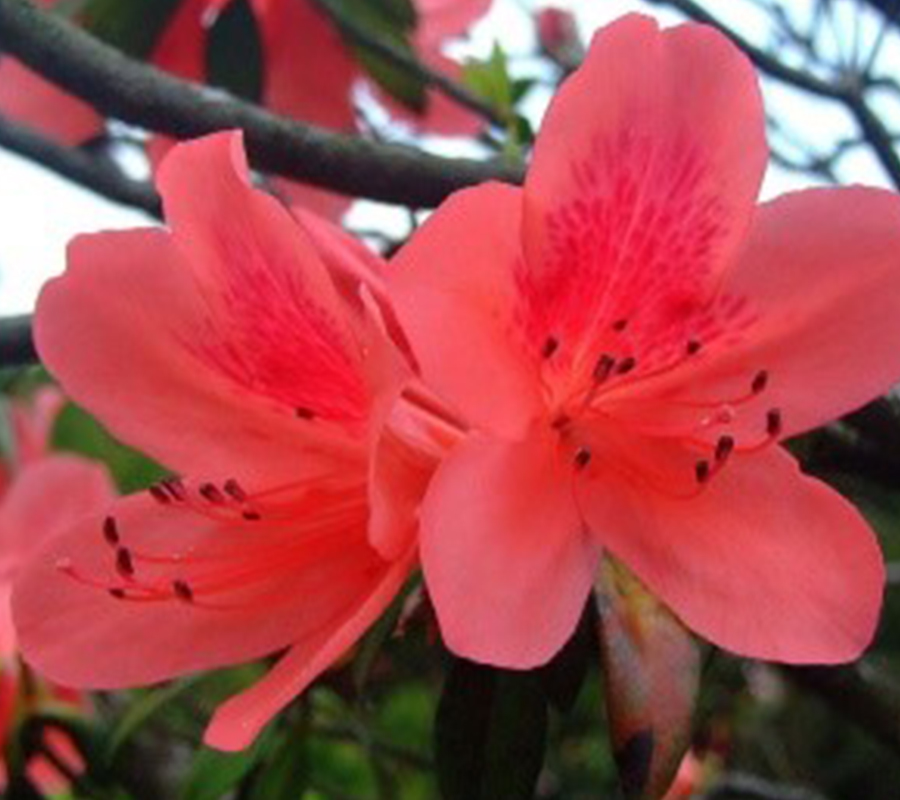
Rhododendron oldhamii Maxim
The species is native to Taiwan. Trichomes can be found on its leaves. Its florescence is around mid-March.
